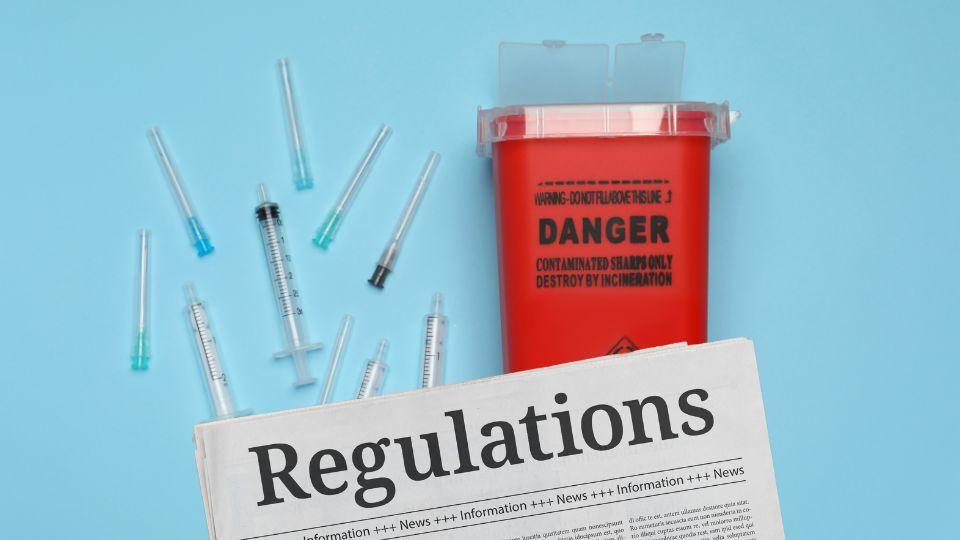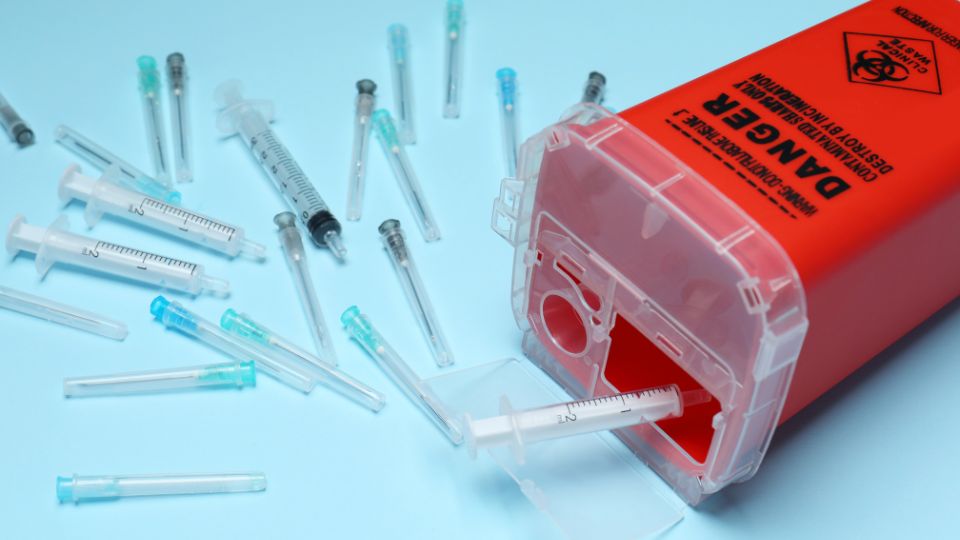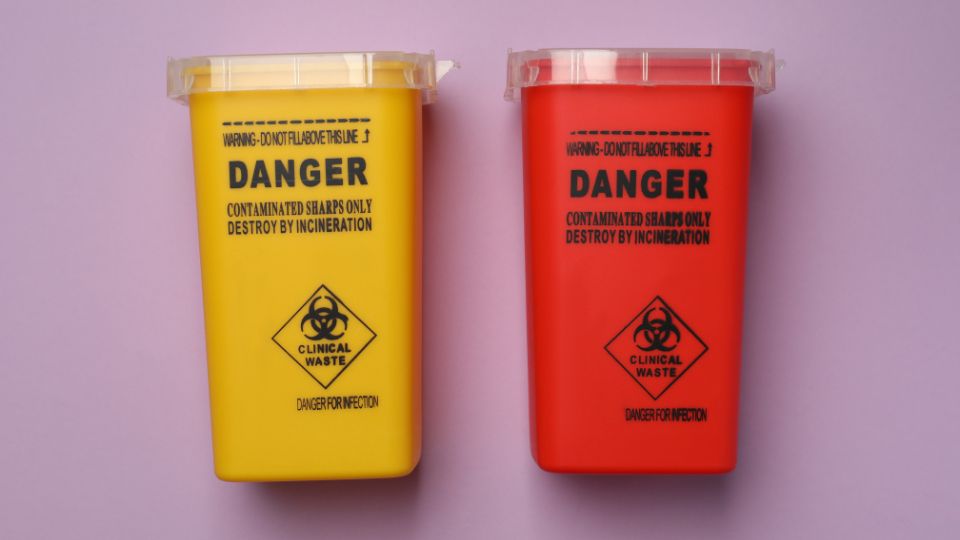
Quick Summary:
- Sharps waste is classified as clinical and hazardous waste in the UK. They pose significant biological hazards due to potential contamination with infectious agents, requiring strict adherence to regulatory guidelines for safe management.
- Businesses must use approved hazardous waste bins, engage licensed waste disposal services, and ensure proper training for staff to handle, store, and dispose of sharps waste safely.
Sharps waste, commonly generated in medical and industrial settings, refers to objects or devices with sharp points or edges that can puncture or cut skin. Examples include needles, syringes, lancets, and scalpel blades.
It is essential to understand the nature of sharps waste, its classification, and how to handle it safely to comply with legal requirements and protect public health.
Table of Contents
- What Waste Classification is Sharps?
- Legal Requirements for Handling Sharps Waste
- Safe Disposal Methods for Sharps
- Environmental and Health Impacts
- Conclusion
What Waste Classification is Sharps?
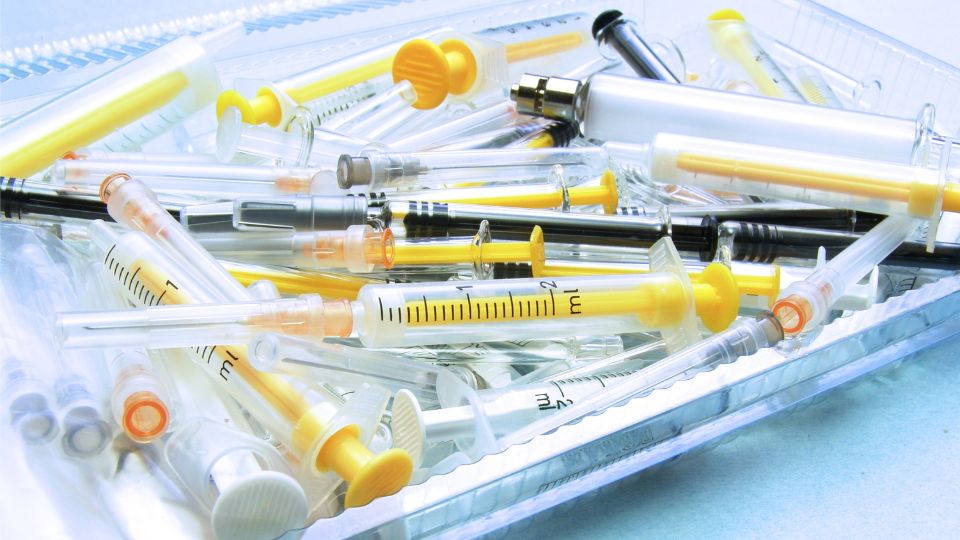
Sharps are classified as hazardous waste under UK regulations. This classification stems from their potential to cause injury and spread infections if not managed correctly.
Hazardous waste is regulated strictly to prevent harm to humans and the environment. Therefore, businesses generating sharps waste must stand by specific guidelines for its collection, storage, transportation, and disposal.
Are Sharps a Biological Hazard?
Sharps can indeed be a biological hazard.
They often come into contact with human or animal body fluids, which may carry pathogens.
As a result, improperly managed sharps pose significant health risks, including transmission of diseases like HIV, hepatitis B, and hepatitis C.
The biological hazard classification mandates stringent handling procedures to mitigate these risks.
Legal Requirements for Handling Sharps Waste
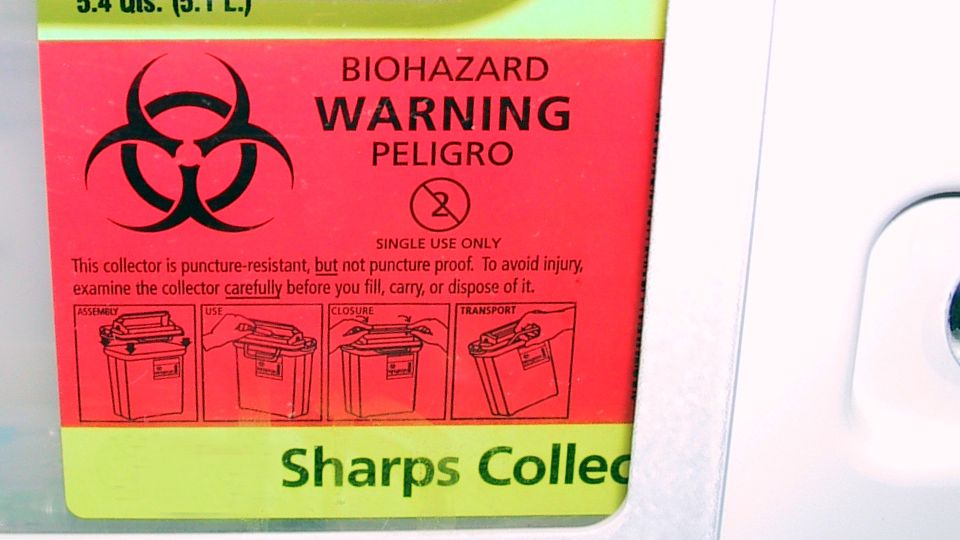
Understanding Regulations
In the UK, the management of sharps waste is governed by several regulations, including the Hazardous Waste Regulations 2005 and the Health and Safety at Work Act 1974.
These laws require businesses to identify hazardous waste, segregate it appropriately, and ensure it is treated and disposed of by licensed waste management companies. Failure to comply with these regulations can result in severe penalties, including fines and legal action.
Segregation and Labelling
Sharps waste must be segregated from other types of waste and placed in designated hazardous waste bins.
These bins are usually yellow and clearly labelled with a biohazard symbol and the words “Hazardous Waste.” Proper labelling is crucial for ensuring that all personnel handling the waste are aware of its potential dangers and can take appropriate precautions.
Safe Disposal Methods for Sharps
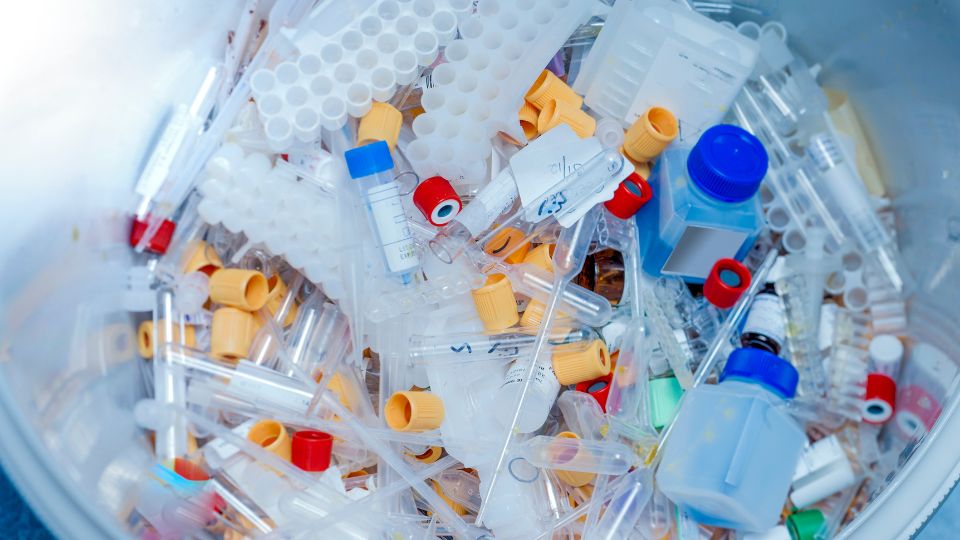
Using Approved Hazardous Waste Bins
To minimise risks, businesses should use approved hazardous waste bins specifically designed for sharps. These bins are puncture-resistant, leak-proof, and have secure lids to prevent accidental exposure or spillage.
It is essential to ensure that bins are not overfilled, as this can compromise safety. Once the bins are full, they should be sealed and stored securely until collected by a licensed waste disposal service.
Engaging Licensed Waste Disposal Services
Engaging a licensed waste disposal service is a critical step in managing sharps waste. These services are equipped to handle hazardous waste in compliance with UK regulations.
They will provide documentation, such as waste transfer notes and consignment notes, which are necessary for audit trails and demonstrating regulatory compliance.
Environmental and Health Impacts
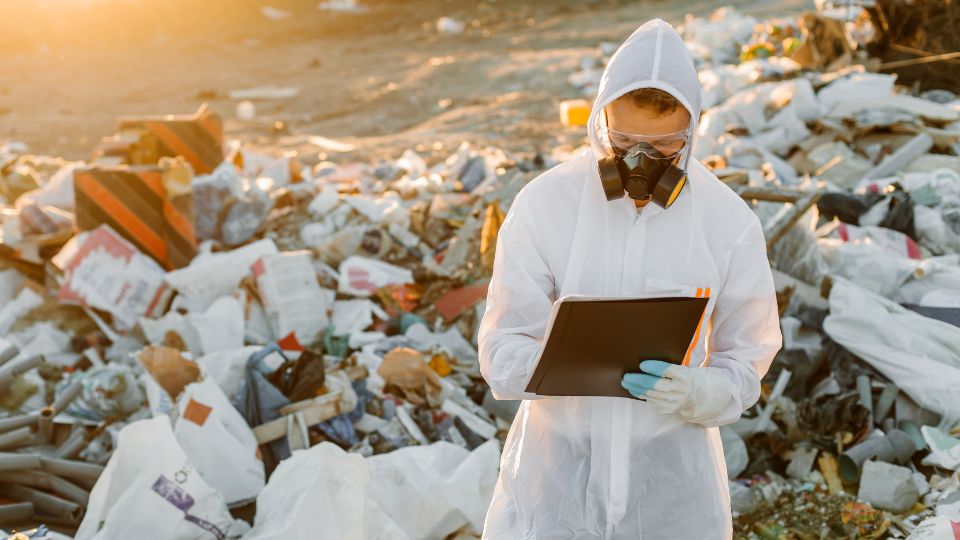
Environmental Concerns
Improper disposal of sharps waste can have severe environmental consequences. Sharp objects can injure wildlife and contaminate water sources, posing a broader ecological threat.
By ensuring that sharps are disposed of correctly, businesses contribute to environmental protection and sustainability efforts.
Public Health Implications
Public health is a primary concern when managing sharps waste. Mismanaged sharps can end up in public areas, posing significant health risks to waste handlers, sanitation workers, and the general public.
Proper disposal practices help prevent injuries and the spread of infectious diseases, safeguarding community health.
Conclusion
In conclusion, sharps waste is classified as clinical and hazardous waste and can be a significant biological hazard. Businesses in the UK must adhere to strict regulations to manage this waste safely.
This includes using approved hazardous waste bins, engaging licensed disposal services, and ensuring staff are adequately trained.
By following these best practices, businesses can ensure compliance with legal requirements and protect the health of their employees, customers, and the wider community.

